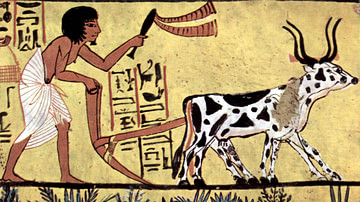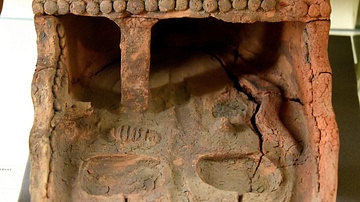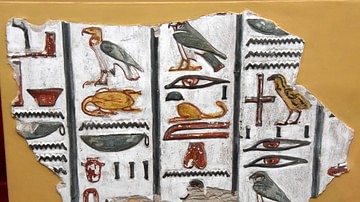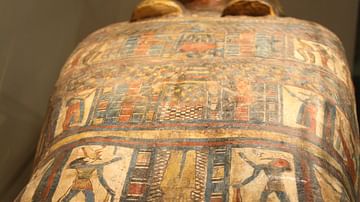Search
Search Results

Article
Ten Ancient Egypt Facts You Need to Know
Ancient Egypt is defined as the civilization which flourished in North Africa between c. 6000-30 BCE – from the Predynastic Period in Egypt (c. 6000 - c. 3150 BCE) through the Ptolemaic Dynasty (323-30 BCE) before Egypt became a province...

Article
Daily Life in Ancient Egypt
The popular view of life in ancient Egypt is often that it was a death-obsessed culture in which powerful pharaohs forced the people to labor at constructing pyramids and temples and, at an unspecified time, enslaved the Hebrews for this...

Article
Cultural & Theological Background of Mummification in Egypt
Many myths and falsehoods concerning the Egyptian practice of mummification have been promoted to the general public in movies, television shows, and documentaries. While these offerings are entertaining and fascinating to watch, the purposes...

Image
Egyptian Pottery Soul House
Redware pottery depicting the so-called "soul house", from E-Kab, Egypt, 11th to 12th Dynasties, 2024-1700 BCE. It has flattened pellets representing a loop of wood. One of the two pillars which supports the roof is lost. Mr. Petrie thought...

Image
Egyptian Stela of Horemheb
Only this fragment from the top of a round topped limestone stela has survived. There are 3 columns of hieroglyphic inscriptions; these state that the stela was "made by the guardian of king's provisions of the Lord of the Two Lands Horemheb"...

Quiz
Egyptian Pyramids, Hieroglyphics, & Art
Egyptian Pyramids, The Sphinx, Egyptian Art, Egyptian Symbols, Egyptian Architecture, Egyptian Hieroglyphics, The Rosetta Stone

Image
Egyptian Door Jamb
Limestone fragment of a door jamb from the temple of Seth (built by the Egyptian pharaoh Thutmose III) at Ombos (Naqada), Egypt, 18th Dynasty, 1543-1292 BCE. The Petrie Museum of Egyptian Archaeology, London (With thanks to The Petrie Museum...

Image
The Obsequies of an Egyptian Cat
The Obsequies of an Egyptian Cat, oil on canvas by John Reinhard Weguelin, 1886. Auckland Art Gallery. A priestess offers gifts of food and milk to the spirit of a cat. On an altar stands the mummy of the deceased, and the tomb is decorated...

Image
Egyptian Sarcophagus of Tetet
Cloth-covered, plastered and painted wood anthropoid coffin of Tetet, 22nd-24th Dynasty.
Egyptian Museum, Castello Sforzesco, Milan.

Definition
Moses
Moses (c. 1400 BCE) is considered one of the most important religious leaders in world history. He is claimed by the religions of Judaism, Christianity, Islam and Bahai as an important prophet of God and the founder of monotheistic belief...